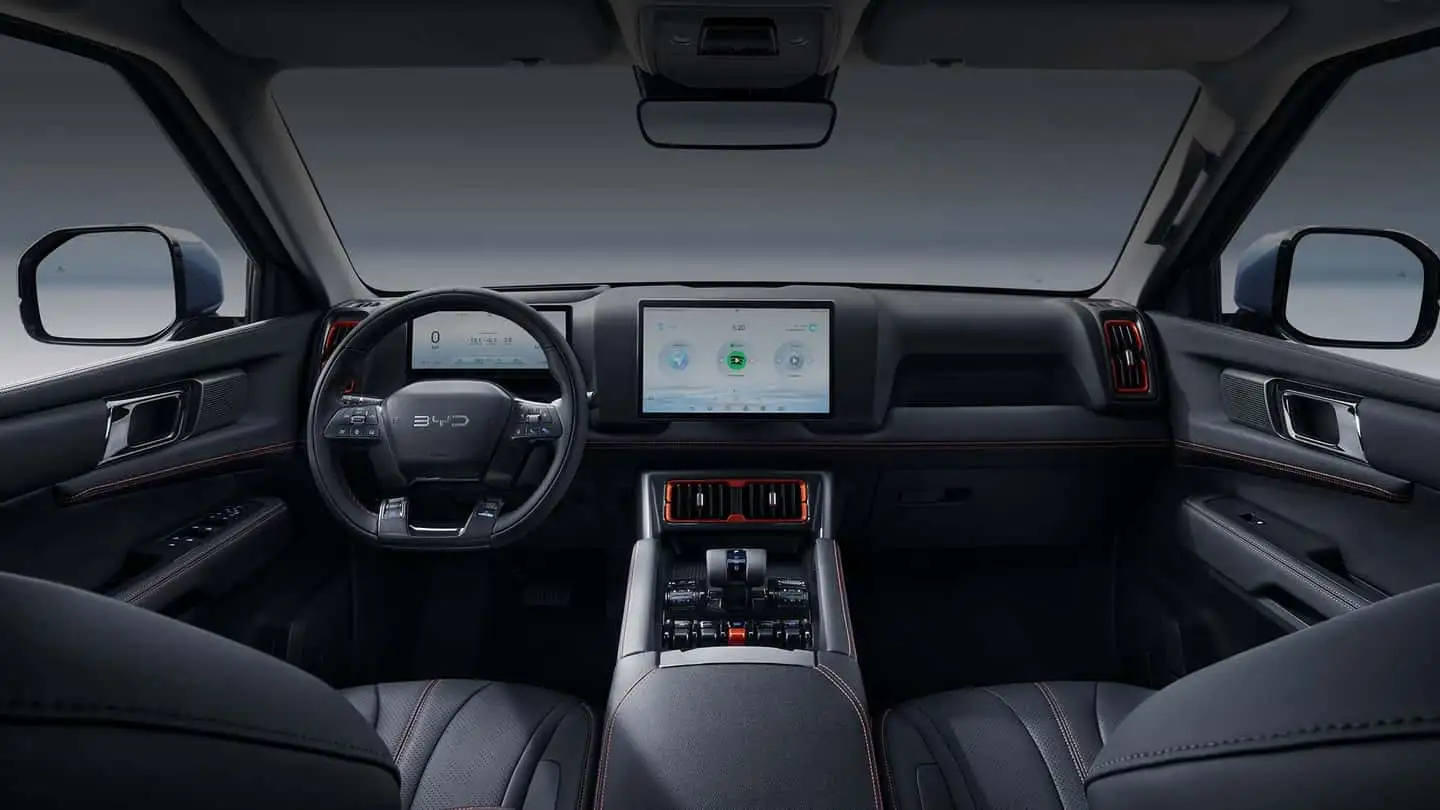BYD Shark, A Plug-In Hybrid Ford Ranger Rival, Launches In Mexico
BYD doesn’t sell passenger vehicles here in the U.S., and the latest round of American tariffs on Chinese-made EVs all but ensures it won’t for a while. But the automaking giant is going all guns blazing in Mexico. The world’s second-largest EV maker after Tesla already sells several all-electric models in the country, including the Tang SUV, Yuan crossover, and Seal sedan among others.
Now it has added another brand-new model to its portfolio in Mexico: the Shark plug-in hybrid. It’s BYD’s first-ever pickup truck. The Shark marks BYD’s entry into a segment traditionally dominated by American and Japanese carmakers. And for its first attempt, it appears impressive, at least on paper.
BYD’s pickup truck enters global markets.
BYD’s foray into the popular pickup truck arena that U.S. carmakers have traditionally dominated is meant to send a message: It plans to expand globally and is probably not rattled by punitive American tariffs.
Most specifications have now been announced on the BYD Mexico website. Apart from Mexico, BYD plans to sell the Shark in Brazil, Europe and Australia as well. Its only direct competitor is the Ford Ranger PHEV, but it will also lock horns with the likes of the Toyota Hilux and Chevrolet S10 among others, as our pals at Motor1 Brazil have pointed out. (While it has garnered headlines for its electric vehicles, BYD also sells a significant amount of hybrids as well.)
In terms of dimensions, the Shark is slightly longer and taller than the Ford Ranger, measuring 214 inches long, 77.5 inches wide and 75.5 inches tall. Its wheelbase spans 128.3 inches. The Shark’s maximum towing and payload capacities are 5,511 pounds and 1,840 pounds, respectively.




Like its rivals, it rides on a body-on-frame platform, using an architecture similar to that of the BYD Seal U SUV in China and the Fangchengbao range of off-road SUVs. BYD calls this the DMO platform, where DM stands for Dual Mode (hybrid) and O stands for off-road.
The plug-in hybrid system combines the 1.5-liter turbo engine with two electric motors, one on each axle, to deliver 430 horsepower. BYD says that’s enough to propel the truck from 0-62 miles per hour in 5.7 seconds.
Its electric-only range is about 62 miles on the outdated New European Driving Cycle (NEDC), so expect the real-world range to be much lower. It also uses BYD’s cutting-edge Blade battery, whose cells are part of the chassis structure.




In terms of design, the fascia has cues from the latest-generation Hyundai Santa Fe and the Ford F-150 Lightning. There’s a full-width LED light bar up front with a rather large floating BYD logo mounted on the radiator grille. Black cladding all around gives it the rugged off-roader look.
Inside, a 12.8-inch rotating infotainment screen dominates the dashboard, similar to the Seal. It is complemented by a 10.25-inch digital gauge cluster. Other notable features include a 12-inch heads-up display, wireless Apple CarPlay and Android Auto connectivity and bidirectional charging among others.




BYD will offer the Shark in two variants in Mexico, GL and GS. The GL starts at 899,980 Mexican pesos (about $53,432) whereas the GS costs about 969,800 pesos ($57,577), according to the exchange rates at the time of publication.
By comparison, the Ford Ranger starts at around 818,000 pesos, while a mild-hybrid diesel Hilux costs about 851,400 pesos. In other words, the Shark is in good company.
The Biden Administration reportedly plans to slap a 100% tariff on Chinese EVs, up from 25% previously. It’s unclear if that includes PHEVs, but launching a pickup truck in North America could be BYD’s message to the U.S. that it plans to expand its presence on the continent, regardless of what America thinks.
31 Photos
The question of whether Chinese EVs will enter the U.S. through the U.S.-Mexico-Canada (USMCA) free trade agreement remains debatable. Recent developments, including Mexico’s refusal to engage in further discussions with Chinese automakers and the withdrawal of incentives, suggest that this prospect is improbable, at least for now.







